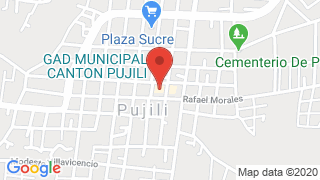Corpus Christi, dance in Pujilí



Corpus Christi in Pujilí lives it up by dancing
Ecuador has countless traditions and cultural expressions that must be discovered, one of them is the feast of Corpus Christi which takes place in the canton Pujilí . The celebration was declared Intangible Heritage of Ecuador.
Participating in the cultural festival is being part of a tradition that unites the ancestral beliefs of the Inti Raymi and those of Christian origin, becoming the most important festival in the town. The celebration begins with a solemn religious ceremony, officiated by the parish priest and preceded by the Prioste chosen by the Municipality. When leaving the religious act, the faithful admire the dance and the elegant costumes and movements of the dancers who proudly parade through the streets of the city.
The procession is headed by the image of the Blessed Sacrament, patron of Pujilí, which is carried by caravan from inside the temple to the surroundings of the central park, accompanied by dancers and visitors who throw the traditional “chagrillo” made with broom and rose petals. You can hear the rumble of flyers, which announce the beginning of a friendship party in the town.
Don Alejandro, a native of La Victoria parish, says that the Priostes are in charge of the organization and they finance together with the Decentralized Autonomous Government who put every detail in the festivity. In addition, he comments that the Prioste is holding the script, the priostazgo badge, which is a cylindrical, silver-colored ornament with two meters in height. The accessory has a crescent crested with stones, precious stones, shells and small crosses at the upper end. It highlights a larger cross and multicolored ribbons
Corpus Christi Eighth Folk Parade
On the most important day, the Eighth Folk Parade of Corpus Christi is held, attended by more than 70 troupes, floats and national and international bands. The Dancer, the main character of the corpus christi, stands out among all the people, and dances happily, accompanied by people dressed in black and white, clowns, chinese, yumbos, mojigangas, caporales, officers and soldiers; who wear their best outfits.
The dancer's clothes are very elaborate and expensive garments, the costume is distributed in two parts: the head and the body of the dancer. The head has a wooden frame covered with mirror fabric with decorative elements such as gold and silver coins, pearls, buttons, crucifixes, medals, mirrors and mullas that represent the richness of the place and the goodness of the sun and the moon. In addition, condor feathers that represent the dominion and freedom of this bird in the Andean moors are observed.
The body of the dancer is made up of a shirt, long skirt and lace panties, they also wear masks, red dyed cabochon wig, silk scarf, gloves, tahalí, macana, chest, apron, yoke and tail made with different silks colors.
The suit shows the skill of its people and represents the coexistence of a mountain range, in the right hand it carries the pinch that happily moves it to the beat of the rattle of the bells that gird on its knees and ankle boots.
At the festival, “ corpus sweets ” are distributed among them nougat, alfajores, sweet threads, mojicones, fig sweets, apple and quince, sweet rice, rag machica (mixture of panela, mapahuira and machica), jucho (sweet of capulí), and many more traditional delicacies, which were made in colonial times.
In the afternoon the festival continues with the famous village bull fights, which presents a true popular theater of joy and joy of the inhabitants who recreate and imitate the great Spanish bullfighting fairs. In the games the occurrences of the Florencio Indian, Don Ruperto and the Cholito Chumado are admired .
The day culminates in city tours with friendly people who are guides and hosts of a magical city. Visit Pujili and get to know its culture, customs and traditions, an indescribable and unique experience that must be lived every year.

Publicado en:
Publicado por:



